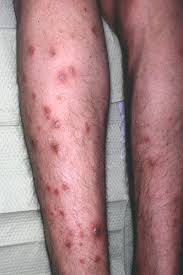What is AIDS and HIV?
AIDS is Short form of ACQUIRED IMMUNE DEFICIENCY SYNDROME. That’s means loss of Immunity power. HIV [ Human Immunodeficiency Virus ] virus responsible for AIDS.
Spread of AIDS
In many ways HIV Virus Can Enter in a Well Human Body. These are -
1. Sexual Relation With Infected one.
2. Use infected Syringe
3. Take infected Blood
4. Use infected Blade On Saloon.
5. New bron Child from infected Mother.
Symptoms of AIDS
The AIDS virus destroys the white blood cells of the patient, so the patient's body gradually loss of immunity power and the symptoms described below begin to manifest -
(i) Fever in the early stages and unexpectedly prolonged fever.
(ii) Various glands of the body become swollen. And the body becomes dry and loses weight.
(iii) Abdominal pain and loss of appetite.
(iv) Bacteria Attacks the lungs and dry cough with chest pain accumulates.
(v) Severe pain and burning felling in the joints
(vi) Shortness of breath,
(Vii) Accumulation of white layer on the tongue.
(VIII) Bleeding from mucous membranes or any pores in the skin.
(ix) Frequent rashes,
(x)All time headaches and gradually loss of memory and vision;
(xi) At the final stages of infection patient suffering on tuberculosis, Pneumonia, diarrhea, blindness etc, due to multiple Disease totally lost of immunity and eventually death.
Identifications of AIDS
AIDS can Identified by many Blood Test. Those Blood Test are -
TPHA test (Treponemal pallidum particle agglutination test), FTA-Abs test (Fluorescent treponemal antibody absorption tes
VDRL test (Veneral disease research laboratory test)
Remedy
1. Safe Sexual Relation.
2. Obey Religious, Social and Moral Rules Properly.
3. Legal Relationship.
4. Don’t Use Same Syringe on Taking Injection for Different People.
5. Don’t Take Any Drug on Vein.
6. Don't Use same Blade Again and Again in Saloon.
7. Identified the Infected People and Treatment him/her Totally Separately.
8. Rise Public Awareness about Terrible of AIDS.
Treatment
Still No Medicine Discovered for AIDS. Researchers Try To Discover New Medicine For Result. But Two Group medicine Give Good Result. 1st is NUCLEOSIDE REVERSE TRANSCRIPTASE INHIBITORS and 2nd is PROTEASE INHIBITORS. Need To Taking Two Medicine Together. This Treatment System Called HAART. HAART Don't Free From AIDS Totally, But it’s Decrease Rate of Death.
HOPE YOUR GOOD HEALTH, THANKS A LOT FOR READ IT.
---------------------------------------------------------------------------------------------------------------------------
Acquired Immunodeficiency Syndrome (AIDS) is a deadly disease caused by the Human Immunodeficiency Virus (HIV). HIV attacks the immune system, gradually weakening it over time and making it difficult for the body to fight off infections and illnesses. Although there is no cure for HIV/AIDS, there are treatments available that can slow down the progression of the disease and help people living with HIV/AIDS to live longer, healthier lives.
Transmission of HIV
HIV can be transmitted in several ways, including through sexual contact, sharing of needles or syringes, from mother to child during pregnancy, childbirth or breastfeeding, and through blood transfusions. It is important to note that HIV cannot be transmitted through casual contact such as hugging, shaking hands, or sharing food or drink.
Symptoms of HIV/AIDS
Symptoms of HIV/AIDS can vary from person to person and may not appear for several years after infection. The early symptoms of HIV can be similar to flu or other viral illnesses and may include fever, headache, fatigue, and swollen glands. As the disease progresses, people living with HIV/AIDS may experience more severe symptoms such as weight loss, chronic diarrhea, and opportunistic infections such as pneumonia and tuberculosis.
Diagnosis and Treatment
Testing for HIV is simple and involves a blood test or oral swab. Early diagnosis is important as it allows people living with HIV/AIDS to access treatment and support services that can help them manage the disease. Treatment for HIV/AIDS typically involves a combination of antiretroviral therapy (ART) medications, which work to slow down the progression of the disease and boost the immune system. It is important to note that ART is not a cure for HIV/AIDS, but it can help people living with the disease to live longer and healthier lives.
Prevention
The most effective way to prevent HIV transmission is through safe sex practices, including the use of condoms and other barrier methods. People who inject drugs should never share needles or syringes, and those who are pregnant or planning to become pregnant should seek medical advice and treatment to prevent mother-to-child transmission of HIV. Blood transfusions should always be screened for HIV to prevent transmission through contaminated blood products.
Stigma and Discrimination
People living with HIV/AIDS may face stigma and discrimination due to misinformation and fear surrounding the disease. It is important to remember that HIV/AIDS is not a moral or personal failing, and people living with the disease deserve the same respect and support as anyone else. Education and awareness campaigns can help to reduce stigma and discrimination and promote understanding and acceptance.
Conclusion
HIV/AIDS is a serious disease that affects millions of people around the world. While there is no cure for the disease, there are treatments available that can help people living with HIV/AIDS to manage the disease and live longer, healthier lives. Prevention efforts, including safe sex practices and screening of blood products, are crucial in reducing the spread of HIV. Education and awareness campaigns can also help to reduce stigma and discrimination and promote acceptance and support for people living with HIV/AIDS.




0 Comments
Post a Comment